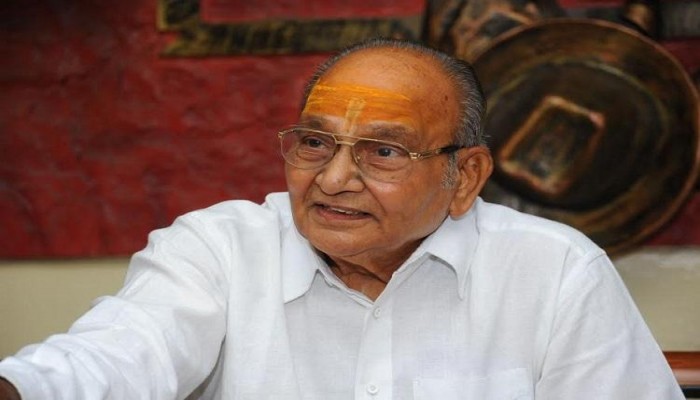K. Viswanath – When the protagonist is an artist.
- In History & Culture
- 05:59 AM, May 05, 2017
- Santhi Pasumarthi
The prestigious Dadasaheb Phalke award was conferred on the doyen of Telugu cinema Sri. Kasinathuni Viswanath couple of days ago as his wife Smt. Jayalakshmi watched, wiping her tears of joy. It was truly recognition for a lifetime of achievement as a technician, writer-director and actor but a recognition that came a little late. Some great stalwarts from South missed this prestigious award. Notable among them are N.T. Rama Rao, P. Bhanumathi and A.V. Meiyyappan among others. Being rooted in the land, technically superior, prolific and highly popular, Southern cinema always stood apart. And K. Viswanath represented the subtlest best it offered.
Woman-oriented movies:
Starting as a sound engineer, he moved into direction by assisting the great Adurthi Subba Rao of Mooga Manasulu/Milan fame. After coming into his own with Atma Gauravam, he made great movies with social message, strong characters and great music attracting the best in each field. O Seetha Katha(Story of a Seetha), Sarada, Jeevana Jyoti all were centered around women while touching on social issues. The way he touched upon serious issues was very direct but not loud. The depiction of pathos was particularly great.
Not just situational music:
Viswanath garu has said in many interviews that he viewed music and dance as an impediment to his narration. Coming from a director known for giving great music, this might seem surprising. He didn’t use music as an add-on or a relief to the story line. There were great meaningful lyrics suited to the characters in other movies. But for him, that was just not enough. A normal character could not burst into a song however apt it might be to the situation. He/she had to have an artistic impulse or a minimal talent to sing or to dance. So the lead in Chelleli Kapuram was a poet and we got great lyrics from him. There would be a harikatha extolling the Indian woman in O Seetha Katha. There would be a Haridasu singing in Undamma bottu pedatha. This is a trend we can see in almost all his movies.
Protagonist is now an artist:
There came a definitive shift in the movie Siri Siri Muvva(Sargam in Hindi), when the protagonist just didn’t just know to sing or dance but was deeply into the art and the story was about her artistic journey. In the movie Seethamahalakshmi, the lead was an actress.
Then came Shankarabharanam a watershed movie in so many ways that his career is always grouped into pre and post-Shankarabharanam phases. It had a unique and unconventional story written by Viswanath garu himself where the protagonists take it upon themselves to preserve the classical music. It came at a time when the youth were carried away with influence of western music and anything Indian and classical was looked down upon (especially in Andhra). People still talk about how enrollments in music classes went up post-Shankarabharanam. Viswanath garu also brought the beautiful sculptures of Belur and Halebidu onto screen along with the beauty and culture of coastal Andhra Pradesh.
What followed were a string of classics. Sagarasangamam(Salangai Oli in Tamil) where the lead is a great dancer but failure in life, is still talked about for its depiction of Karuna Rasa. Shubhalekha(Shubhkaamnaa in hindi) was probably the most emphatic movie on social issues(dowry harrassments). There too, the leads know Kuchipudi and Carnatic music. Swathimutyam(Eshwar) dealt with a man with special needs while Sirivennela showed the journey of artistes with disabilities. Swathikiranam deals with jealousy while Shrutilayalu and Swarnakamalam again talk about preservation of arts like Carnatic music and Kuchipudi.
Great storylines, unconventional leads (his leads in many movies are anything but the stereotyped young heroes n heroines), great comedy that could seamlessly fuse with serious emotions like pathos, dialogues that stay with you and make you reflect and subtle romance. Viswanath showed that all these can co-exist and the movie can still do well at the box office. Star-power didn’t matter. He knew how to bring the best in his lyricists and music directors and to discuss music and dance in his films merits an article in itself.
Viswanath and classical arts found allies in each other. To say that there might not have been a better spokesperson for classical arts in the field of cinema is an understatement.







Comments